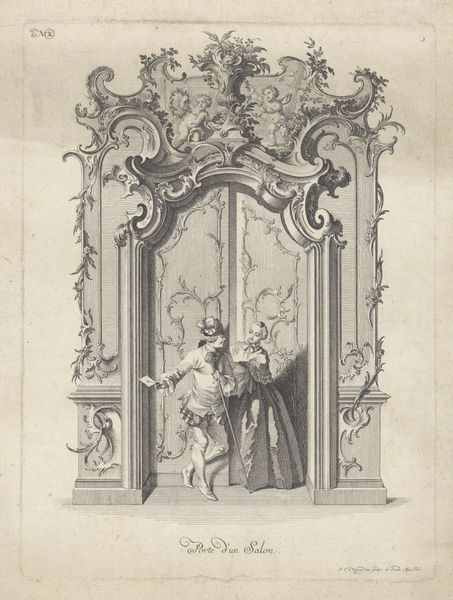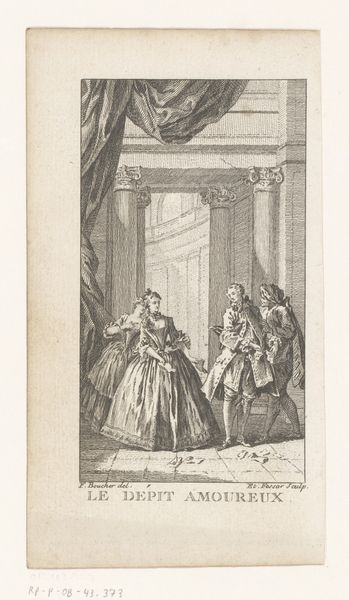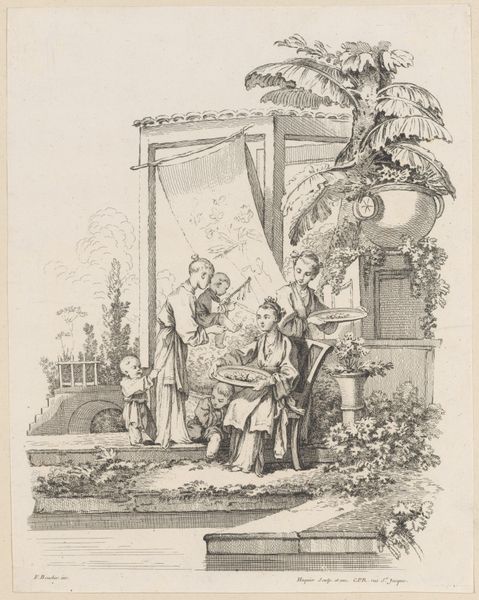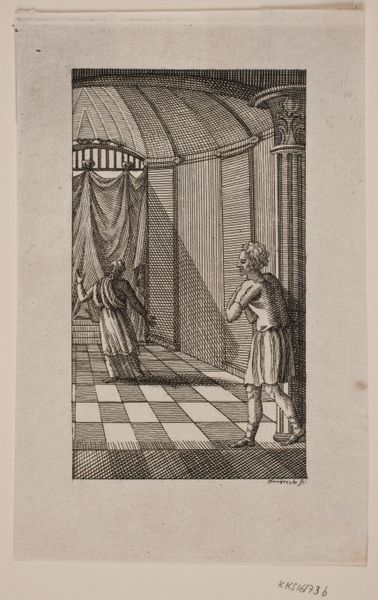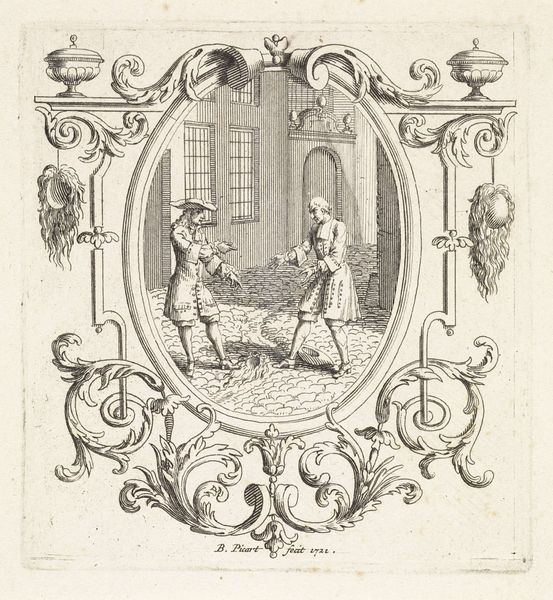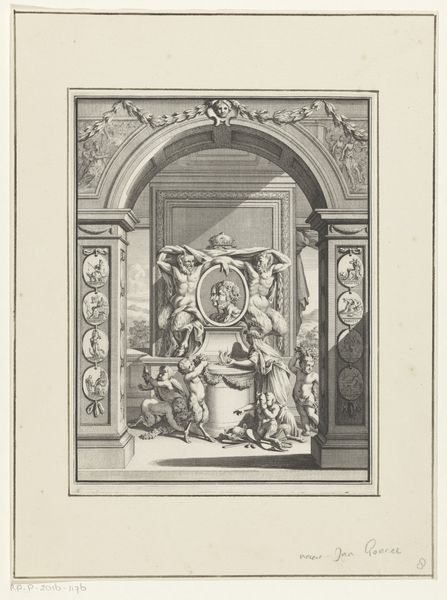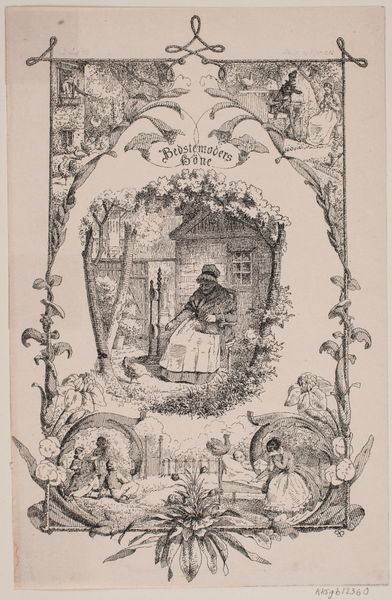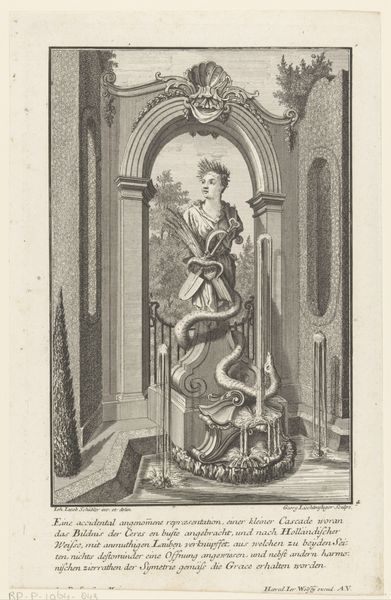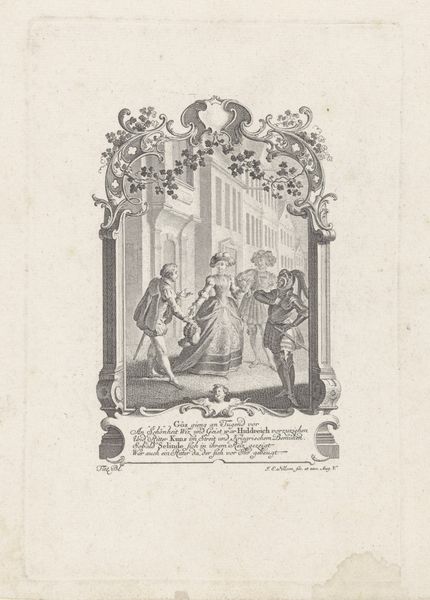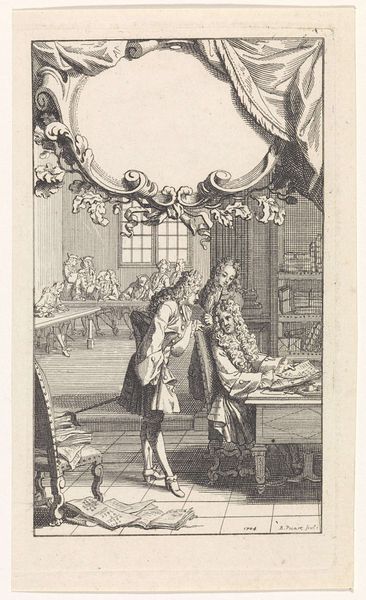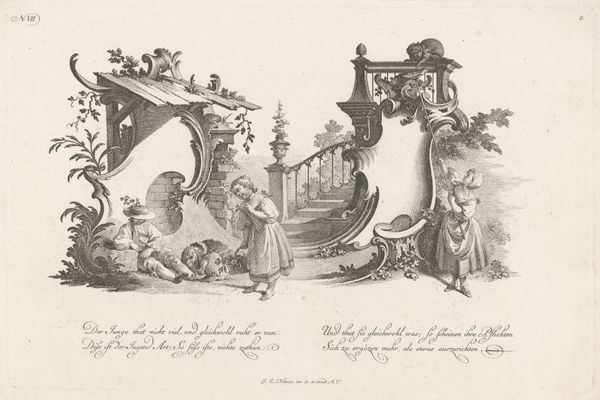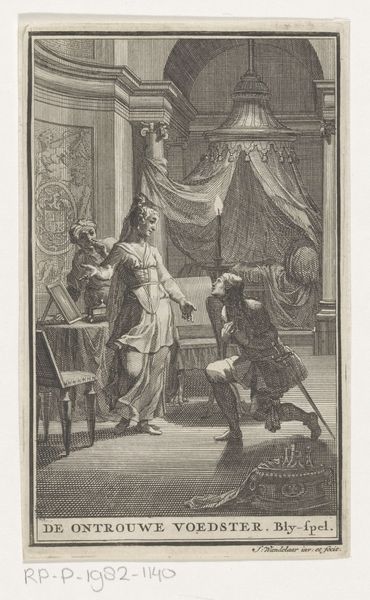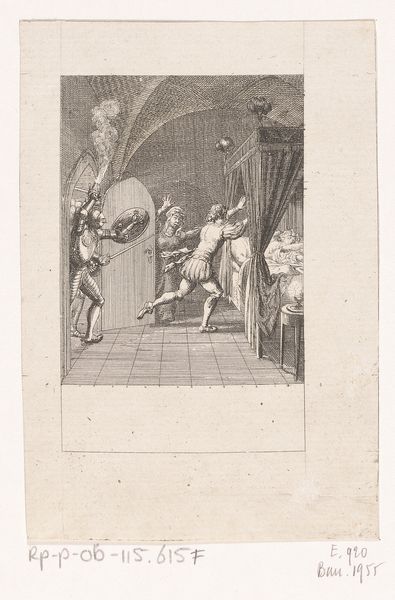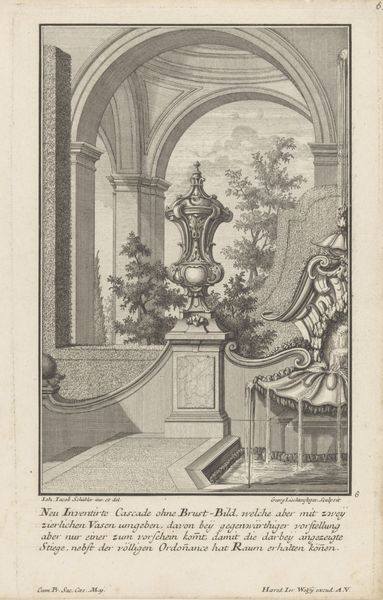
Façon moderne d'une Porte de Jardin (A Garden Door in the Modern Style) c. 1755 - 1760
0:00
0:00
print, engraving
# print
#
figuration
#
genre-painting
#
engraving
#
rococo
Dimensions: plate: 27 x 20 cm (10 5/8 x 7 7/8 in.) sheet: 40.3 x 24.7 cm (15 7/8 x 9 3/4 in.)
Copyright: National Gallery of Art: CC0 1.0
Editor: This is Johann Esaias Nilson's "A Garden Door in the Modern Style," an engraving from around 1755-1760. It has a very ornate feel, especially the gate itself. What jumps out at you? Curator: I see a clear display of Rococo extravagance, but I'm drawn to the means of its production and consumption. This print wouldn't have been a unique artwork, but something made to be disseminated widely. Editor: How does the method of making this print influence the subject itself? Curator: Mass-produced images like these played a crucial role in democratizing design. This image depicts luxury—ornate gardens enjoyed by the elite. Engravings made that aesthetic accessible, shaping aspirations and influencing craft production on a broader scale. What were the social implications of circulating designs in this manner? Editor: It makes you think about who could access this, right? Did these prints impact artisans and craftspeople as well? Curator: Exactly. These images served as templates. Furniture makers, for example, could adapt these motifs even without seeing the real gardens. The image becomes a tool in itself. Editor: So, in essence, we're not just seeing a garden gate; we're seeing a blueprint for taste being mass-produced. Curator: Precisely. This image exists at a crucial intersection between artistic inspiration, industrial capabilities, and societal desire for luxury that wasn’t previously achievable for all. Editor: That is fascinating. Thinking about it as a tool for the democratization of design gives it an entirely new dimension. Thanks for that!
Comments
No comments
Be the first to comment and join the conversation on the ultimate creative platform.
